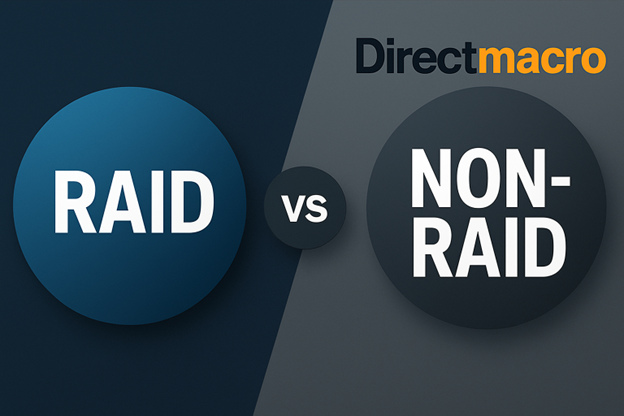How to Check PC Specs – All You Need to Know
Do you often wonder how to check your PC specs without spending hours on manual techniques? Checking your computer’s specifications is crucial to ensure your computer has what it takes to run the latest apps, games, or software without any issues.
Whether you’re managing an enterprise-level IT infrastructure or just want to confirm that your PC meets the latest requirements, knowing your PC specs is essential.
In this guide, we’ll break down exactly how to uncover every detail of your PC’s hardware, helping you avoid any nasty surprises. So, don’t go anywhere—read until the very end to ensure you don’t miss anything important for your next upgrade.
What are PC Specs – Establishing a Strong Foundation
By definition, PC specifications refer to the detailed list of hardware components that make up your computer. These specifications include details about your processor (CPU), memory (RAM), storage, graphics card (GPU), motherboard, and more.
As a matter of fact, each of these components’ details is crucial and plays a vital role in your PC’s overall performance. That’s why understanding these specifications allows you to optimize your system for specific tasks with ease.
Essentially, PC specs determine your computer’s power, speed, and efficiency. Moreover, they influence everything from the applications you can run to how quickly tasks are completed.
How to Check Your PC Specs on Windows – 6 Techniques
Your hunt for how to check PC specs ends here. There are several ways to check computer specifications as a Windows user, each offering different levels of detail. Here’s a step-by-step guide on how to check computer specs using various methods.
Using Command Prompt
Command Prompt is a powerful tool to access detailed information about your PC specs directly from the command line.
- Press “Windows + R”, type “cmd”, and press “Enter”.
- Type “systeminfo” and press “Enter”
This command will display a comprehensive list of system specifications, including the operating system, processor, memory, and more.

To check detailed disk information
- Type “wmic diskdrive get model,size”
- Press “Enter”
This will show the model and size of your hard drives.

How to Find Computer Specs via PowerShell
Follow these easy steps:
- Press “Windows + X”
- Select Windows PowerShell (Admin) from the menu
- Type “Get-WmiObject win32_processor” and press “Enter”
This command provides detailed information about your CPU, including its name, manufacturer, and clock speed.

For Detailed RAM specs
- Type “Get-WmiObject win32_physicalmemory | Format-Table Manufacturer,Speed,Capacity”
- Press “Enter”
This command displays the manufacturer, speed, and capacity of each RAM stick installed in your PC.

For Disk Information
Use the command “Get-PhysicalDisk” to get detailed information about your physical disks, including size and health status.

How to Check PC Specs via System Information Tool
To your surprise Windows provides a built-in tool called “System Information” that offers a detailed overview of your PC’s hardware and software specifications. Follow the given steps to extract all the information you need:
Press “Windows + R”, type “msinfo32”, and press “Enter”
(This will open System Information window)
Upon navigating the summary, you can discover the overview of your PC’s specs, including the processor, BIOS version, installed RAM, and more.
On the left-hand side, you’ll find categories:
- Hardware Resources
- Components
- Software Environment
Click through these categories to explore detailed specs for each component.

Utilize Task Manager for Fetching Quick Specs
Task Manager provides a quick glance at your PC’s performance and specs. Here are the steps you need to follow:
- Press “Ctrl + Shift + Esc” to open the Task Manager
- Click the “Performance” tab to see real-time data on CPU, memory, disk, and network usage
Here you can also see the model of your CPU, the amount of memory installed, and the speed of your network connection.

How to Check Your PC Specs via Internal Settings
The Windows Settings menu also provides a straightforward way to check your basic PC specs. Just follow these easy steps and you are done:
- Press “Windows + I” to open the Settings menu
- Click on “System,” then select “About” from the sidebar
Under “Device specifications”, you’ll find information about your processor, installed RAM, and system type (32-bit or 64-bit). Moreover, the “Windows specifications” section shows the edition, version, and build number of your operating system.

Using Third-Party Tools
For those who need more detailed information or prefer a graphical interface, several third-party tools can help you check your PC specs. Here are a few prominent examples.
CPU-Z
It is a free tool that provides detailed information about your CPU, motherboard, memory, and more. Here is a step-by-step procedure you need to follow:
- Visit the official website and download CPU-Z.
- Open CPU-Z to view detailed information about your CPU
(This will include its name, codename, process technology, and more.)
You can explore the “Memory”, “Motherboard”, and “Graphics” tabs for detailed specs on each component.
Speccy
It is another free tool that offers a comprehensive overview of your system specs. Here the steps you need to follow:
- Visit the official website and download Speccy
- Open Speccy to view a summary of your system’s specifications
Now, you can click on individual components like “CPU,” “RAM,” “Graphics,” and “Storage” to get detailed information.
How to Find PC Specs in Large-Scale Enterprise Environment
For IT managers overseeing a fleet of computers, the importance of automating the computer spec checks is crucial. Otherwise, you may end up wasting a lot of time and resources. Here are few ways you can automate your PC specs check mechanism:
Using Windows Management Instrumentation (WMI)
Windows Management Instrumentation (WMI) allows you to retrieve system specifications across multiple computers in a network.
Run WMI Queries
Use tools like PowerShell or Group Policy Management to run WMI queries across your network.
Retrieve Detailed Specs
WMI can provide detailed information on CPU, memory, disk, and more for each machine on the network.
Automate Reporting
Create scripts to automate the reporting process, ensuring that you have up-to-date information on all systems.
Using System Center Configuration Manager (SCCM)
System Center Configuration Manager (SCCM) is a robust tool for managing large-scale IT environments.
- Install SCCM across your network to manage system configurations
- Use SCCM’s hardware inventory feature to explore each machine’s specs
- Create custom reports to track system specifications
- Identify outdated hardware, and plan for upgrades with ease
Why Checking PC Specifications Matters – Discover the Key Reasons
For IT managers, enterprise businesses, and gamers, understanding how to check PC specs goes far beyond mere curiosity—it’s a critical aspect of maintaining efficiency, security, and ensuring the longevity of your IT infrastructure. Below are the reasons explaining why you should learn how to find PC specs:
No Compatibility Headaches for the Future
Before deploying any new software across your organization, it’s essential to verify that your existing hardware can support it. This step prevents potential slowdowns, crashes, or other issues that could disrupt operations.
By regularly checking your PC specs, you ensure that your systems meet or exceed the minimum requirements for any new software. As a result, you can enjoy smooth and uninterrupted IT operations for the longer run.
Real-Life Scenario
Imagine planning a company-wide upgrade to a new version of your CRM software. Without checking whether your current hardware meets the software’s requirements, you could face massive delays, decreased productivity, and increased IT support calls, all of which could have been avoided with a simple spec check.
Targeted Upgrades for Optimized Performance
If you have a clear understanding of “what are my computer specs”, you can fine-tune your systems for optimal performance with ease. Plus, you can identify potential issues if your computer is lagging or underperforming.
With this knowledge, you can make targeted upgrades or adjustments, such as increasing RAM, upgrading storage to an SSD, or even replacing aging processors, to keep your systems running smoothly.
Few more reasons to add up
- Older CPUs may not handle modern multitasking demands
- Insufficient RAM can cause slowdowns
- Upgrading to an SSD can dramatically reduce load times
Upholding Security and Compliance Standards
Talking about enterprise environments to be specific, maintaining hardware that meets or exceeds certain specifications is crucial for upholding security and compliance standards.
However, older hardware might lack support for the latest security updates, making systems vulnerable to cyber threats.
So, if you regularly check and update PC specs, you can ensure that your organization’s computers can receive critical security patches and updates. As a result, you can safeguard sensitive data and maintain regulatory compliance.
Security risks you can nullify
- Older systems might not support newer operating systems
- Outdated BIOS/UEFI firmware is a potential security risk
- Compatibility with the latest security software is essential
Plan Your Future Upgrades
Technology is constantly evolving, and so too are the demands of modern software and workloads. By establishing your understanding regarding how to check pc specs, you can plan for future upgrades more efficiently.
This foresight ensures that your systems remain capable of handling new software, increased workloads, and other challenges that arise as your business grows.
Core advantages you can leverage
- Plan and budget for future upgrades or replacements
- Scale with your business needs prevents bottlenecks in productivity
- Track your hardware’s end-of-life (EOL) and plan timely replacements
Supporting Remote Work and Virtualization
After Covid-19, most organizations have adopted remote/hybrid working models. So, as an employee or IT manager of such an organization, you need to ensure that PCs can handle the demands of:
- Remote access software
- VPNs
- Virtualization technologies
By checking computer specifications, IT managers can ensure that remote employees have the necessary resources to maintain productivity, security, and connectivity from any location.
Enhancing Employee Productivity
As an IT manager, one of your core responsibilities is to amplify employee experience and productivity. When employees have access to well-performing, reliable systems, they will:
- Work more efficiently
- Avoid technical issues
- Stay focused on their tasks
So, it is a must for you to develop proper understanding regarding “how to find computer specs”. Therefore, you can avoid frustrating downtime and ensure that your workforce can operate at its best.
Impact on employee morale
- Reduces frustration and lost productivity due to system issues
- Employees are more likely to engage positively
Wrapping Up
By now, you are well-equipped with all the information you need to check your PC specs and make informed upgrade decisions in 2024. Follow any of the steps above, and you’ll find your computer specs in minutes.
Lastly, if you’re considering an upgrade, Direct Macro is a reputable marketplace to consider. We’ve built a strong reputation on Shopper Approved in a short amount of time and are known for delivering quality products on time.
Do you need advice on buying or selling hardware? Fill out the form and we will return.

Sales & Support
(855) 483-7810
We respond within 48 hours on all weekdays
Opening hours
Monday to thursday: 08.30-16.30
Friday: 08.30-15.30







